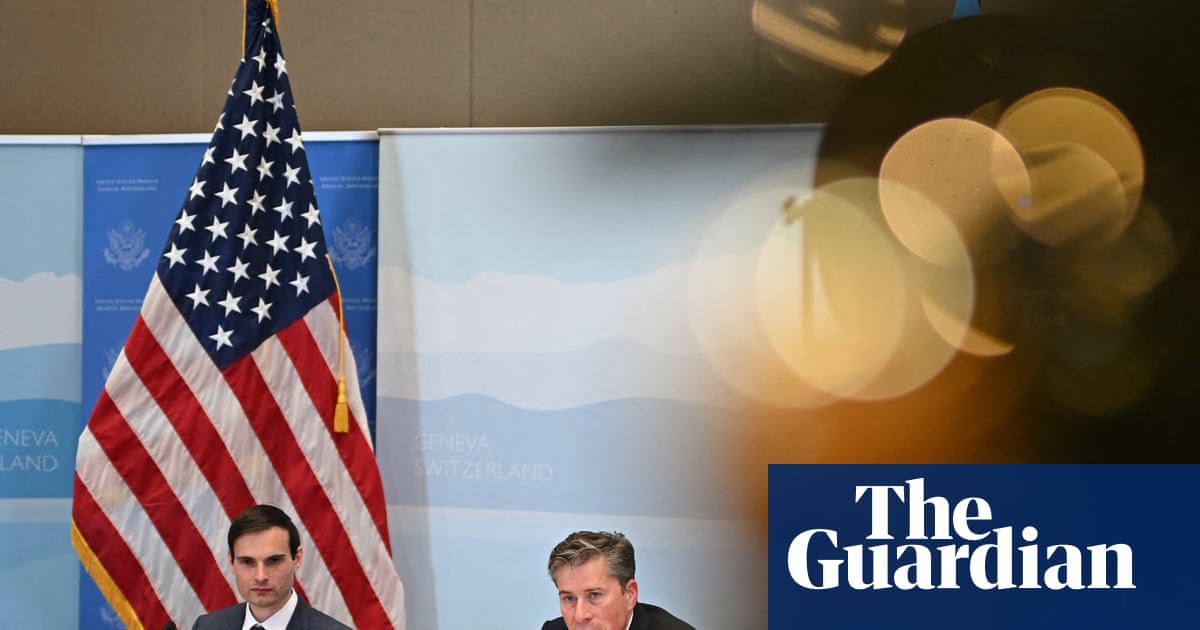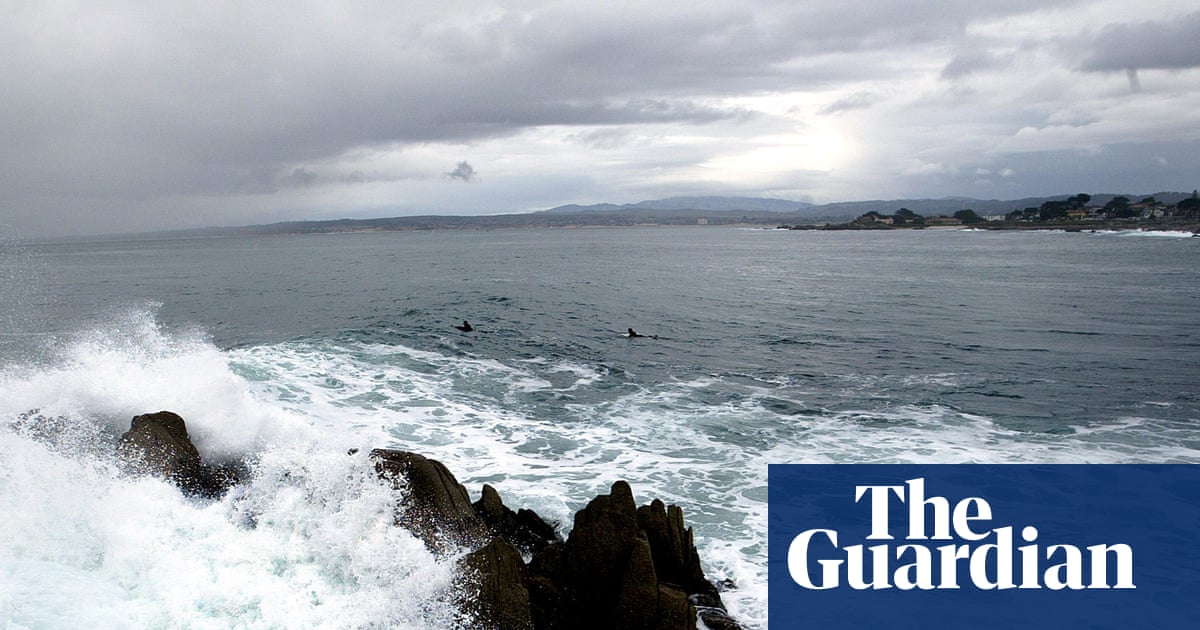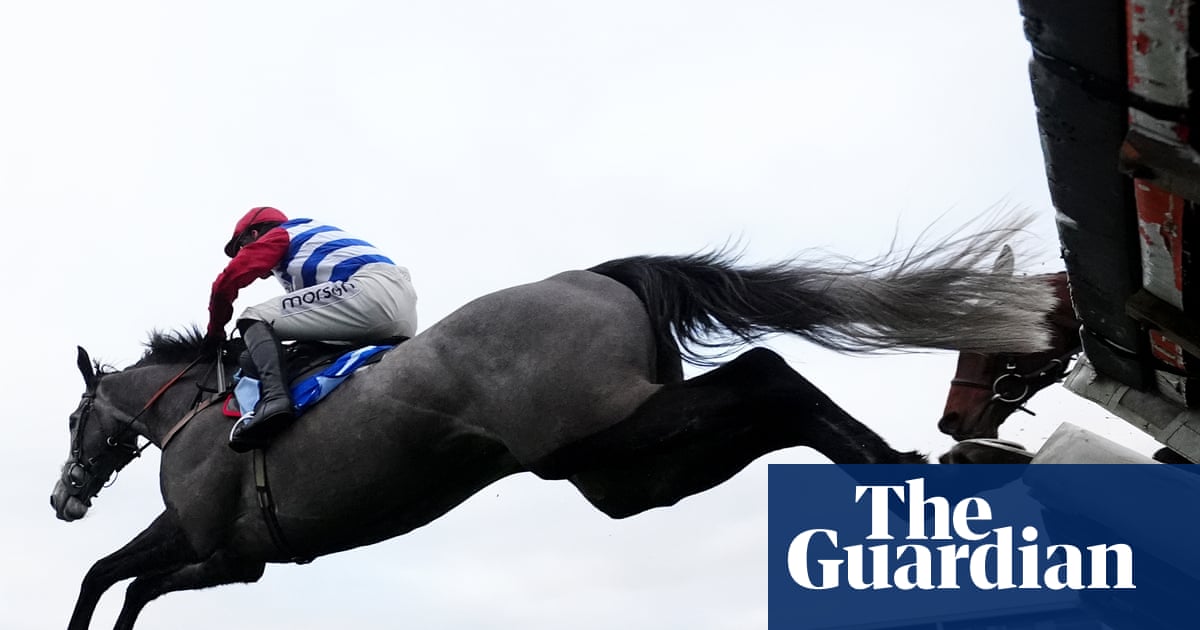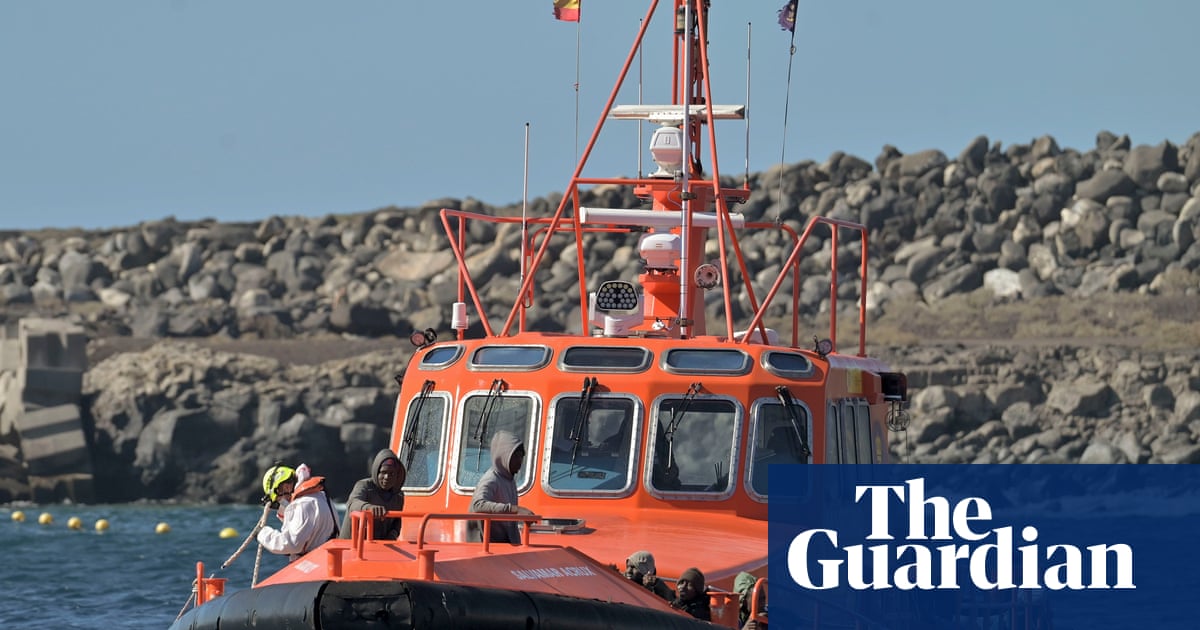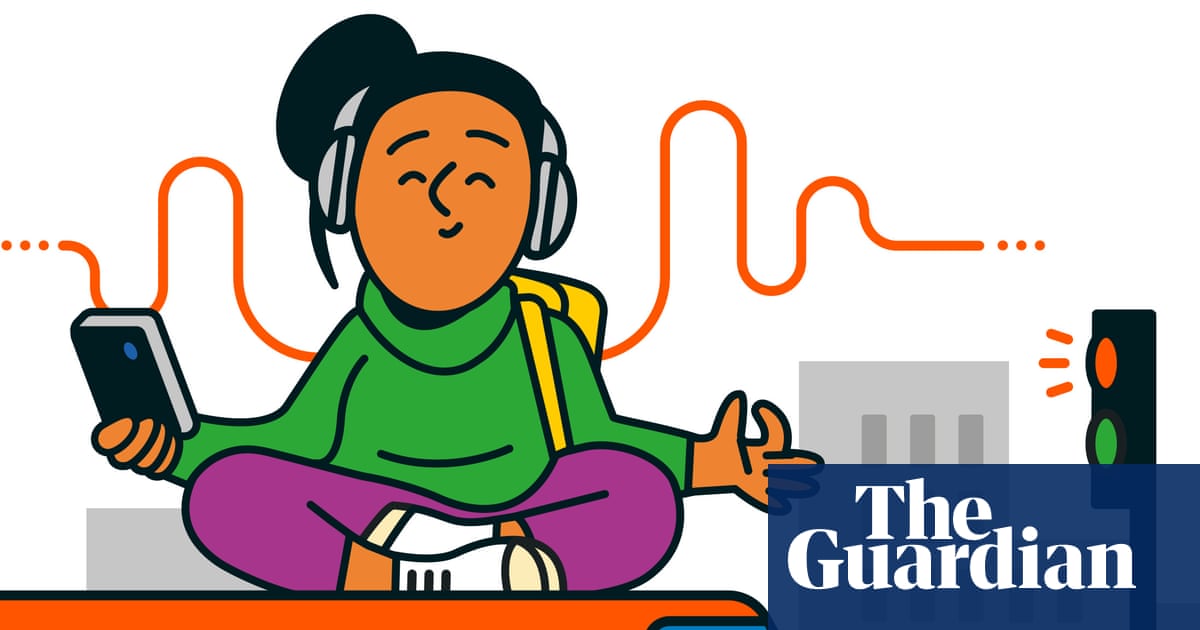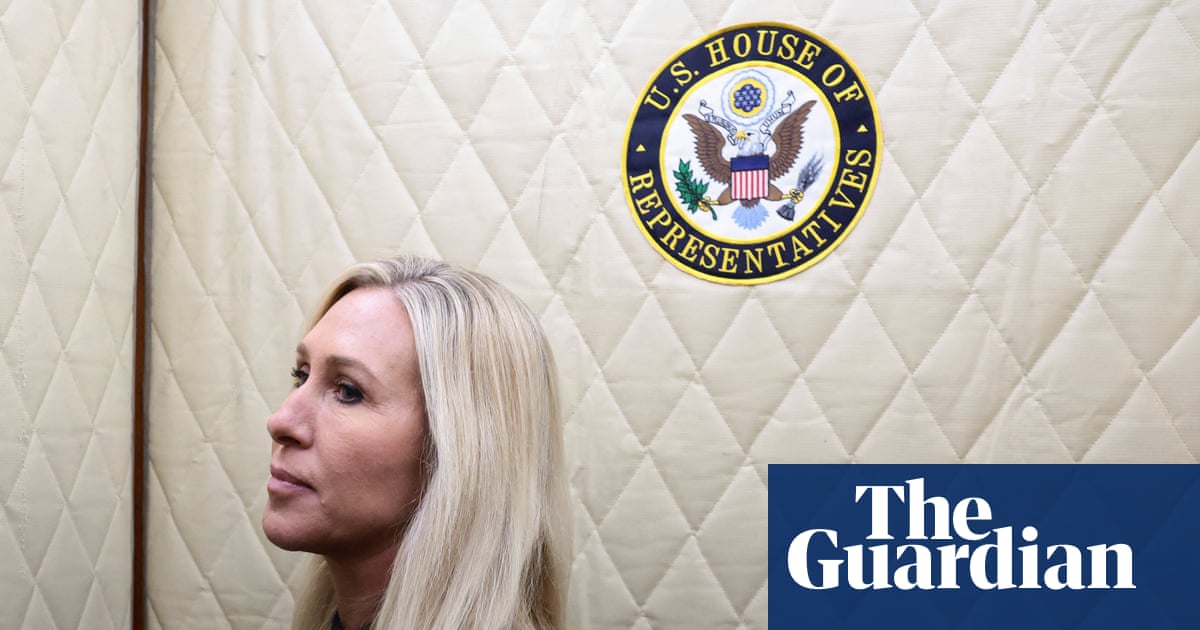It’s early afternoon at the latest national march for Gaza in central London. A man is wearing a sweatshirt bearing a photograph of Hind Rajab, the five-year-old girl who was killed in the Gaza conflict last year along with family members and the paramedics who tried to save her. He doesn’t want to be named. But it is, he says, his attempt “to keep her memory alive, until we get justice … Whether it takes one month, one year, 100 years, I’m not giving up. I’m not going to stop wearing this until the killers are behind bars.”
It’s a heart-rending example of a phenomenon common to all these marches over the past two years: people are here to call for an end to the war and the Israeli occupation, and many are using their clothes to bolster their message.
Far from being a frivolous afterthought, protest dressing has become an important part of these marches. Wearing the symbols and colours of solidarity can be an expression of grief and a call to action.
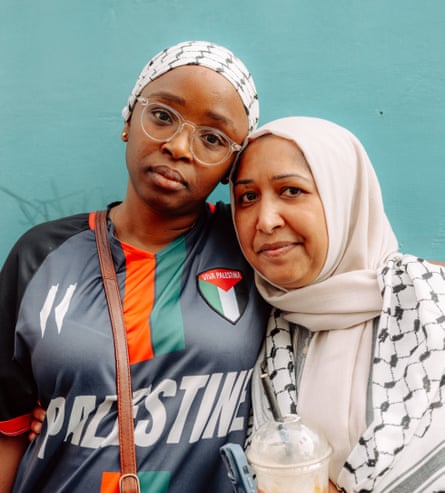
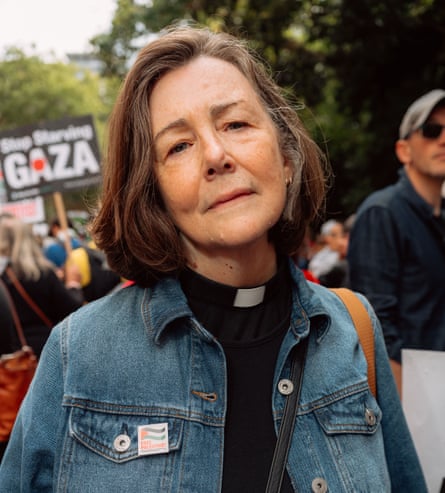
-
Marima (left), with a friend, and the Rev Poppy Hughes marching on 6 September in London. Photographs: Ethan Parker/The Guardian
“Enough is enough,” says Mariama, who is in her 30s and works for the NHS in Nottingham. She is wearing a football-style shirt with a Palestinian flag in place of the club crest. Alongside it are the words “viva Palestina” and a visual representation of the contested area.
“It’s one way of giving voice to your opposition, my opposition, to the occupation of Palestine,” says the Rev Poppy Hughes, 65, of her Palestine Solidarity Campaign (PSC) pin badge. Otherwise “there’s nothing to identify you as somebody who’s opposed to the occupation and the genocide and the starvation.”
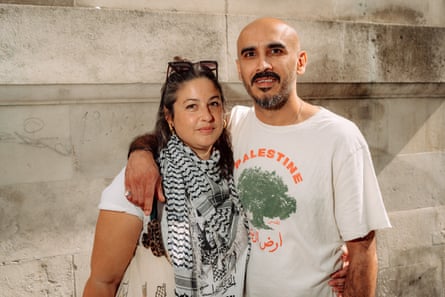
-
Loulou and Suhail on the march. Photographs: Ethan Parker/The Guardian
There’s a sense of shared project about it. “You feel more united when you’re sharing the dress code,” says Suhail, 44, who is here with Loulou, 45; both are wearing their solidarity on their sleeves.
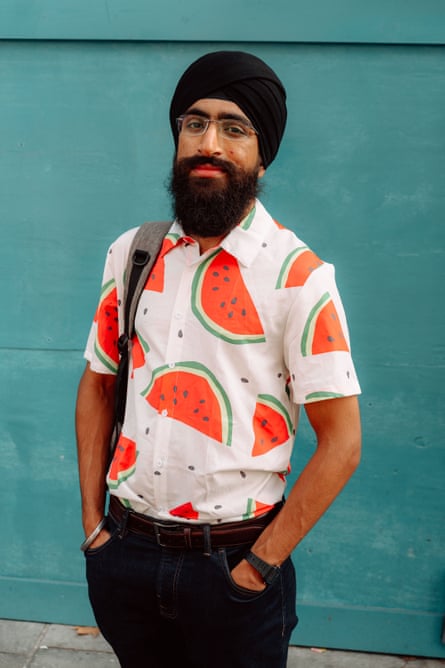
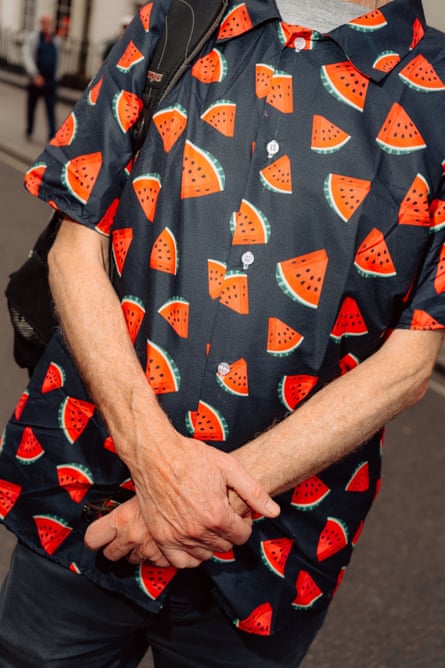
-
Jaiman and Tony demonstrating solidarity through watermelons. Photographs: Ethan Parker/The Guardian
For the people here, simple things such as a keffiyeh or a badge signify solidarity without words. Watermelons, a symbol of Palestinian solidarity since public displays of the Palestinian flag were outlawed by Israel, hang as earrings or are crocheted into hats. Jaiman, 28, from Bexley, is wearing a shirt covered in them. So too is 71-year-old Tony from London. A longtime wearer of Hawaiian shirts, he thought he “should get a better fruit”.
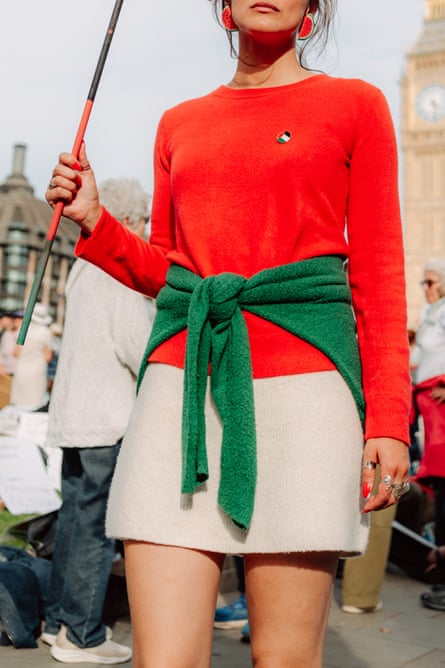
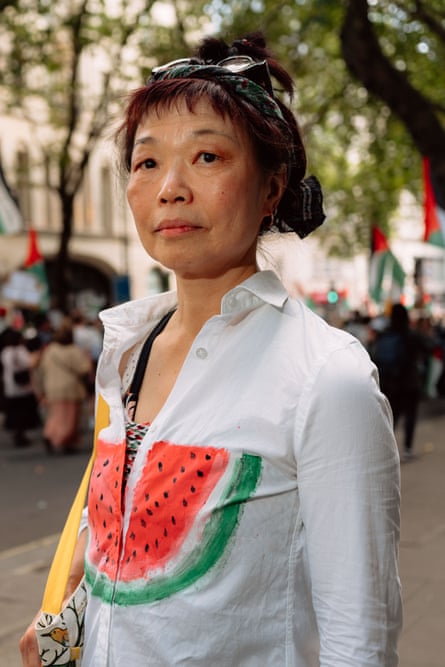
-
Left, a protester expresses herself from head to toe; right, Lamdy in a customised shirt. Photographs: Ethan Parker/The Guardian
Others are getting creative, wearing entire outfits crafted from keffiyehs or dressing from head to toe in the colours of the Palestinian flag. For each protest, 65-year-old Lamdy customises something. This time it’s an old white shirt painted with a watermelon. “Words are not being heard,” she says.
Protest dressing has long been used as a way to express support for a cause. For Camille Benda, author of Dressing the Resistance: The Visual Language of Protest, it is “using objects in the form of garments, accessories, clothing, fashion, costume, to send a non-verbal visual message”. According to Stanford’s Richard Ford, author of Dress Codes: Crimes of Fashion and Laws of Attire, while “the specifics vary quite a lot … it’s when people choose a common style of dress as a symbol of their political struggle”. He points to the suffragette movement wearing white and people during the civil rights movement wearing their “Sunday best”.
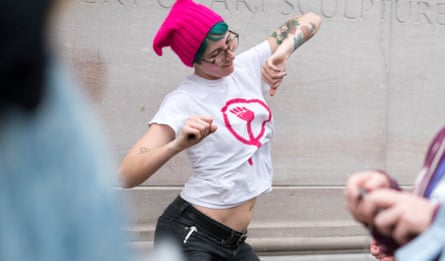
-
Taylor Benac dances in a pink ‘pussyhat’ during the Women’s March in Washington DC, January 2017. Photograph: Ali Smith/The Guardian
The impact is greatest when single items become shorthand for a movement. The pink pussyhat became a symbol in the first Trump administration. In austerity-gripped Greece, rubber gloves became an emblem of political discontent. And there were the gilets jaunes of the recent French revolts.
The power of these clothes is demonstrated by how authorities try to stymie it: during the first Palestinian intifada, women would stitch symbols of resistance on to what became known as “intifada dresses” – an update of the region’s traditional style of embroidery, known as tatreez. According to Rachel Dedman, a tatreez expert, “these dresses, just like a flag … were forbidden and dangerous to have”. Even in the UK, protest clothing is controversial: at a protest in Parliament Square last August, one man was arrested for wearing a T-shirt with the slogan “Plasticine Action”, complete with a picture of the Aardman character Morph. (He was released not long afterwards.)
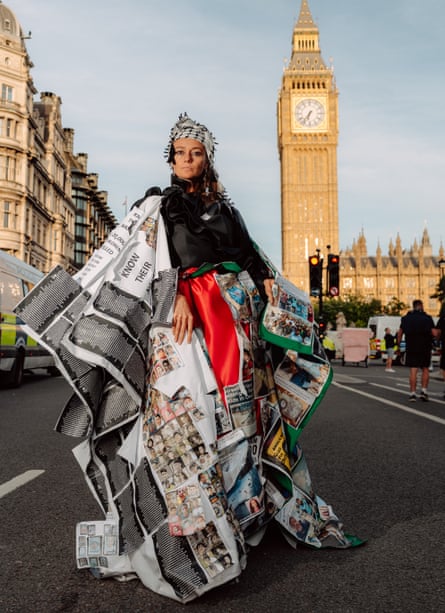
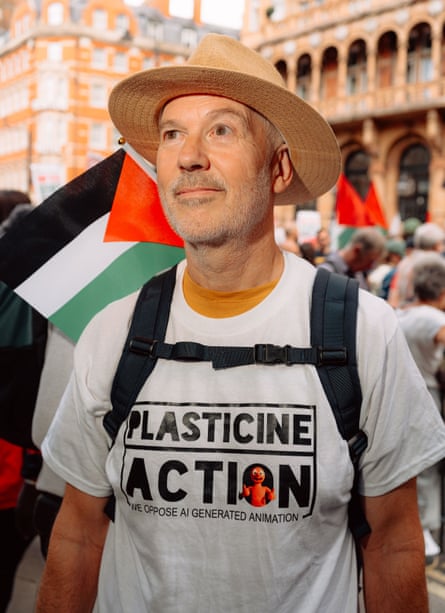
-
Left, a marcher sending a strong message; right, Richard Daniel, 66, sports a Plasticine Action T-shirt. Photographs: Ethan Parker/The Guardian
Ayham Hassan is a Palestinian designer whose graduate collection at Central Saint Martins this summer caused waves. Originally from the West Bank but currently in London, he understands what it is to protest through clothes, which he does symbolically through his work, “because I’m discussing a concept that is about my culture … about the genocide, it becomes unapologetically a protest to free Palestine”. But he also uses fashion to express himself more tangibly: for his graduate collection, a tatreez scarf made by his mum had to be, in effect, smuggled from the West Bank to London. Even though there’s no law against it, he says, “it’s not safe to have tatreez going from one place to another because it’s clearly Palestinian … and it’s clear that they see that as a threat.”
But protest dressing goes way beyond protests – and for many, it is about incorporating these symbols into the everyday, keeping these causes front and centre even without the context of a protest. That extends to commutes, offices, parks and, over the summer, festivals – long a location where hedonism meets politics, and protest has historically found a voice
Aya Mousawi, a regular protest-goer and editor of Love Is Resistance, a new book of posters in solitary with Palestine, stencils her own clothes with flags and slogans; she wears them not just to the protests, but in her everyday life. It is, she says, “a visible mark of this community that has formed and is growing in power”.
If, in the past, people taking part in movements dressed with more uniformity, now we’re seeing more individual expression. Ford explains: “To get that many people together required a long-standing organisation with a lot of administrative chops, so it was easier to have a dress code if you had that kind of organisational apparatus. Today it’s more decentralised. People can show up, wear what they’re going to wear.” It goes for the protests but also more broadly.
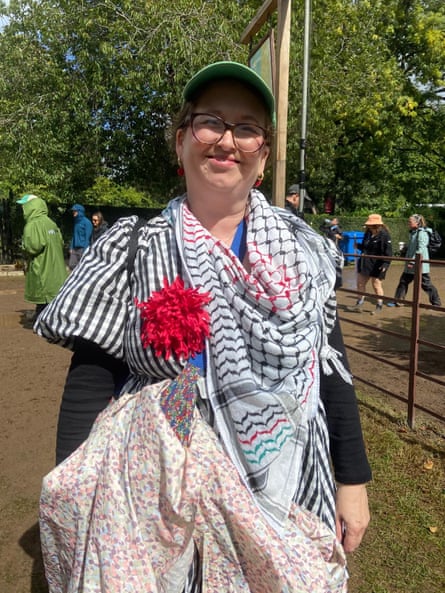
-
Laura O’Herlihy at the End of the Road festival. Photograph: Ellie Violet Bramley
“Wearing something is such a good way of doing that,” says Laura O’Herlihy, a 51-year-old from Dublin wearing a keffiyeh and badges at the End of the Road festival in late August. “Every time you look down or anybody looks across the crowd, they just see it, and it keeps it there.”
Jim Derbyson, from a village outside Bristol, has dyed his beard the colours of the flag. “It raises consciousness of the situation. You can’t just let it disappear.” These symbols are appearing worldwide. Riffs on football jerseys, like Mariama’s, are popular: Greta Thunberg has been wearing one from the Dublin football club Bohemians on board the flotilla en route to Gaza. And at the Cannes film festival last year, Bella Hadid wore a keffiyeh dress.
-
A civil rights march in Jacksonville, Florida on 22 April 1964, with protesters in their ‘Sunday best’. Photograph: Harold Valentine/AP
But protest dressing in 2025 also comes with limits. Katharine Hamnett is one of the pioneers of the slogan T-shirt, having famously worn one that read “58% DON’T WANT PERSHING” to meet Margaret Thatcher in 1984. She hasn’t stopped using the medium since, and last week launched a new design in collaboration with Annie Lennox that reads, simply: “Let Gaza Live”.
“T-shirts are still great, as they become your caption,” Hamnett says. “They are in your brain instantly.” It is perhaps why other designers, from Simone Rocha and Priya Ahluwalia to Bella Freud, are releasing their own slogan T-shirts to support Palestinian humanitarian organisations.
Done right, protest dressing can be a powerful tool for a movement. “We’re all speaking with one voice just by virtue of what we’re wearing,” says Ford. “With the advent of mass media, photographs or films of people all dressed in similar clothing together in a mass protest is a really powerful visual image.”

 3 months ago
52
3 months ago
52


